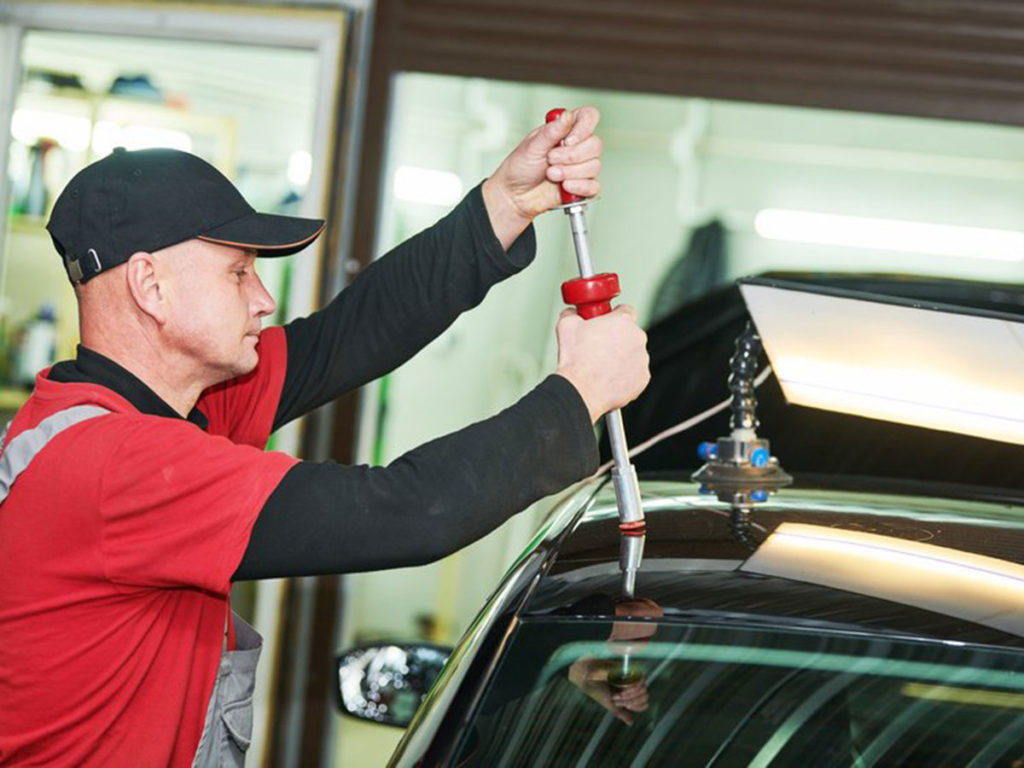How We Works

How Does PDR Work
Paintless PDR in theory is a very simple concept you're taking a sheet of metal that has been dented and pushing it or pulling it back to flat. Tricky part comes into play when the paint is added because at this point our main goal is to complete the repair to 100% factory status without damaging the factory paint and clear coat.
I use a couple different techniques to remove dents creases and hail, my two main methods are with hand tools I pushed itself from behind the panel and a glue pulling method that uses plastic tabs and hot glue.
- Push Method Hand Tools
- Glue Pull Method
Using hand tools can be said to be the harder of the two techniques but once it is mastered it is by far the most effective and efficient method of all. It does require an extreme high level of hand-eye coordination, it requires an extensive knowledge of the inner workings of vehicle panels so as not to cause damage to electronics and mechanisms. But I typically do prefer using hand tools I have extensive collection that I have a math over my decades of experience in every single one of my tools has a specific purpose. I have different tools for steel ,high-strength steel and aluminum. The other half to making repairs includes knocking metal down back to flat that includes knock down and hammers. My main goal in most situations is to push the dent to 100% flat, but there is situations where the damage requires me to push out a dead past 100% and all the way up to 105 to 110% for this reason Hammers and knockdowns coming to play. Just like my hand tools I have hammers and knocked Downs of all different materials thickness and weight any combination I use all those to not cause any further paint damage and manipulate the metal in a way that I see fit so as to repair the damage to 100%. Once again these different tools and methods I have learned over many many years and thousands and thousands of deaths to know exactly what each that requires. Cuz as the old saying goes no two dents are alike.
Glue pulling is my second favorite method to make an repair, it can take a little bit longer depending on your setup time but it is very effective for large damage and hard to access areas. So accessing a dent getting my tools on the dent is the main goal in the initial PDR process and the accessibility will determine what method I will do. In situations where access is difficult to impossible I will resort to glue pulling the dent. This is also a very simple concept in theory just takes a lot of practice to master, once again the main goal is to not cause pain damage and to fully repair the dead to 100% factory quality. The tools involved are plastic tabs of all shapes and sizes all the way from a couple millimeters up to over 18 in, slide hammers and specialized PDR glue. The slide hammers come in different weights and links all depending on what kind of snap I need on the glue tab that once again is determined based on the nature of the dent. PDR glue is actually a very scientific process that has been refined over the past 8 to 10 years, and used to be common practice just to go down to the craft store and grab whatever glue they had in stock. The problem is getting the glue to the right temperature not too hot not too cool and gain the glue to stick so to pull the metal out but not stick too much where it pulls paint off. So that is where the PDR tool industry has stepped up the massive way and have developed many different types of PDR glue used at all different temperatures and climates. And yes the temperature and climate play a huge Factor on the glue pulling process I will not use the same glue in the winter when the high is 60° as I will in the summer when I'm trying to get glue to cool on panels that are possibly 150° plus hot.
